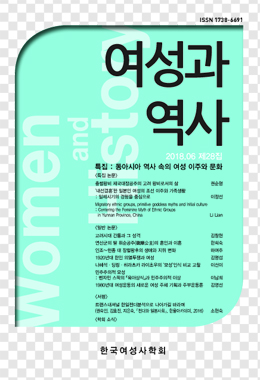이 글은 근대 일본의 여성참정권 운동인 ‘부선운동’의 역사를 이치카와 후사에가 중심이 된 부선획득동맹의 운동과 정치상황의 변화의 관계 속에서 파악한 논고다. 부선운동이란 정당내각과 의회정치가 이루어지던 시대를 배경으로 여성의 의회 진출을 목표로 한 것이었다. 하지만 1932년 정당 내각이 붕괴한 후 군부 중심의 파시즘 시대가 되면서 부선운동이 어려워졌고 따라서 의회 진출 목표도 희박해졌다. 그 대신에 전쟁으로 인한 비상시국에서 중앙과 지방 정부의 독려로 여성들이 각종 어용기관에 참여했고, 정부의 정책 결정과 수행에 참여하는 ‘참정’의 기쁨을 누리게 되었다. 후사에를 비롯한 동맹의 운동가들은 참정권 획득을 통해 여성과 사회·국가에 대한 공헌을 희망했으나, 군부와 파시즘 정권에 대한 협력의 방식으로 ‘참정’이 이뤄지고 말았다. 그 결과 참정의 영역과 강도를 확대할수록 본래 목표와 멀어지는 어용의 방식으로 ‘참정’할 수밖에 없는 딜레마에 봉착하였다.
This article attempts to examine the history of modern Japanese women's suffrage movement, “the fusen movement”, focusing on the movement of Ichikawa Fusae and “the fusen kakutoku dōmei” in association with change of the political situation. Originally, the fusen movement was aimed at the advancement of women into the parliament. However, as political parties and parliamentary politics declined and the fascism era began, the fusen movement targeting political parties became difficult to develop and the motivation to aim for women’s advancement into parliament also diminished. Here, under the emergency of the war, as the requests of the central and local governments to women to participate in governmentfriendly organizations continued, women enjoyed the pleasure of political participation. Eventually, Fusae and other activists hoped to contribute to women themselves and the country through the political participation right, their “political participation” could have only been done in the way of cooperation with the fascism regime, which was a kind of dilemma they faced.


